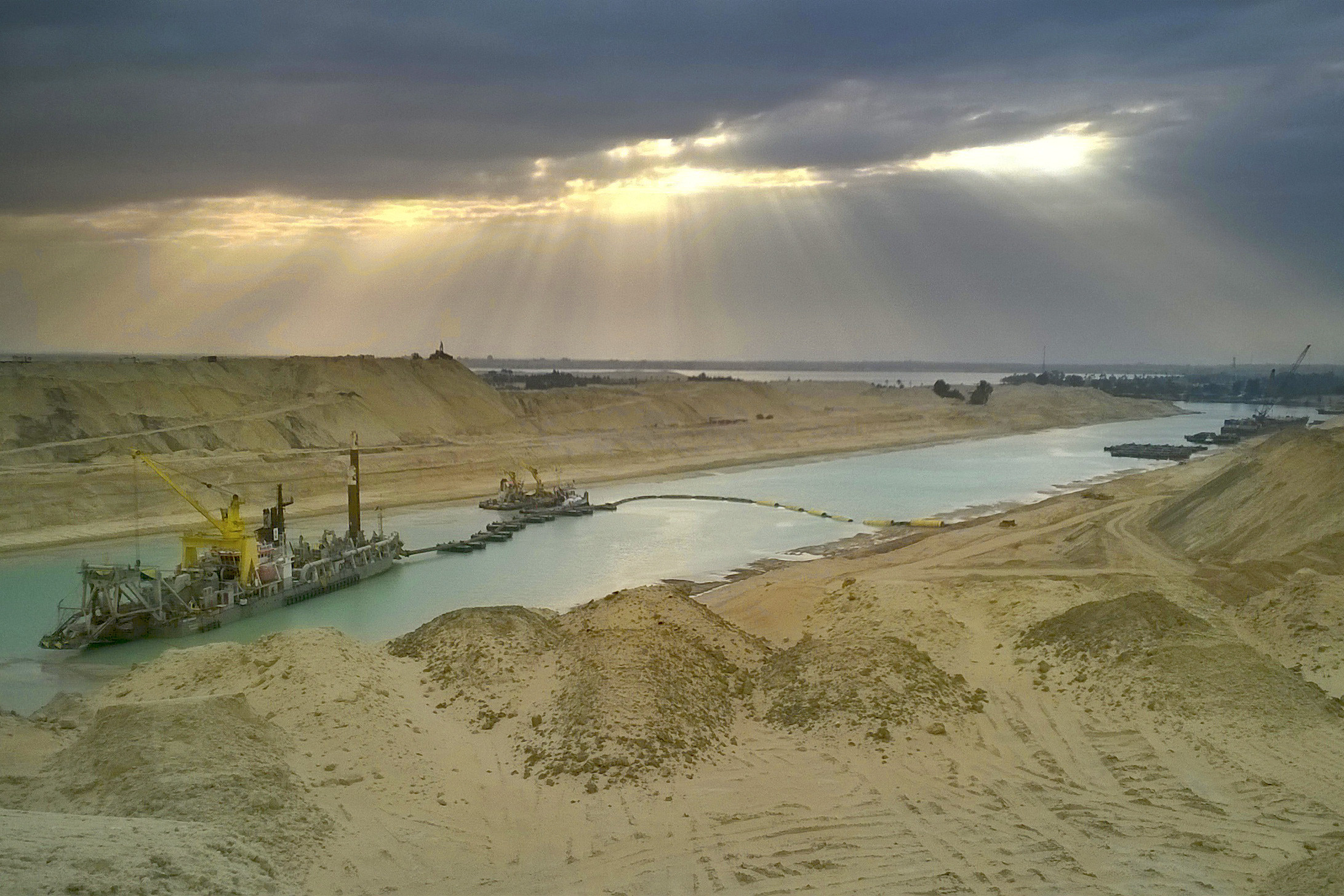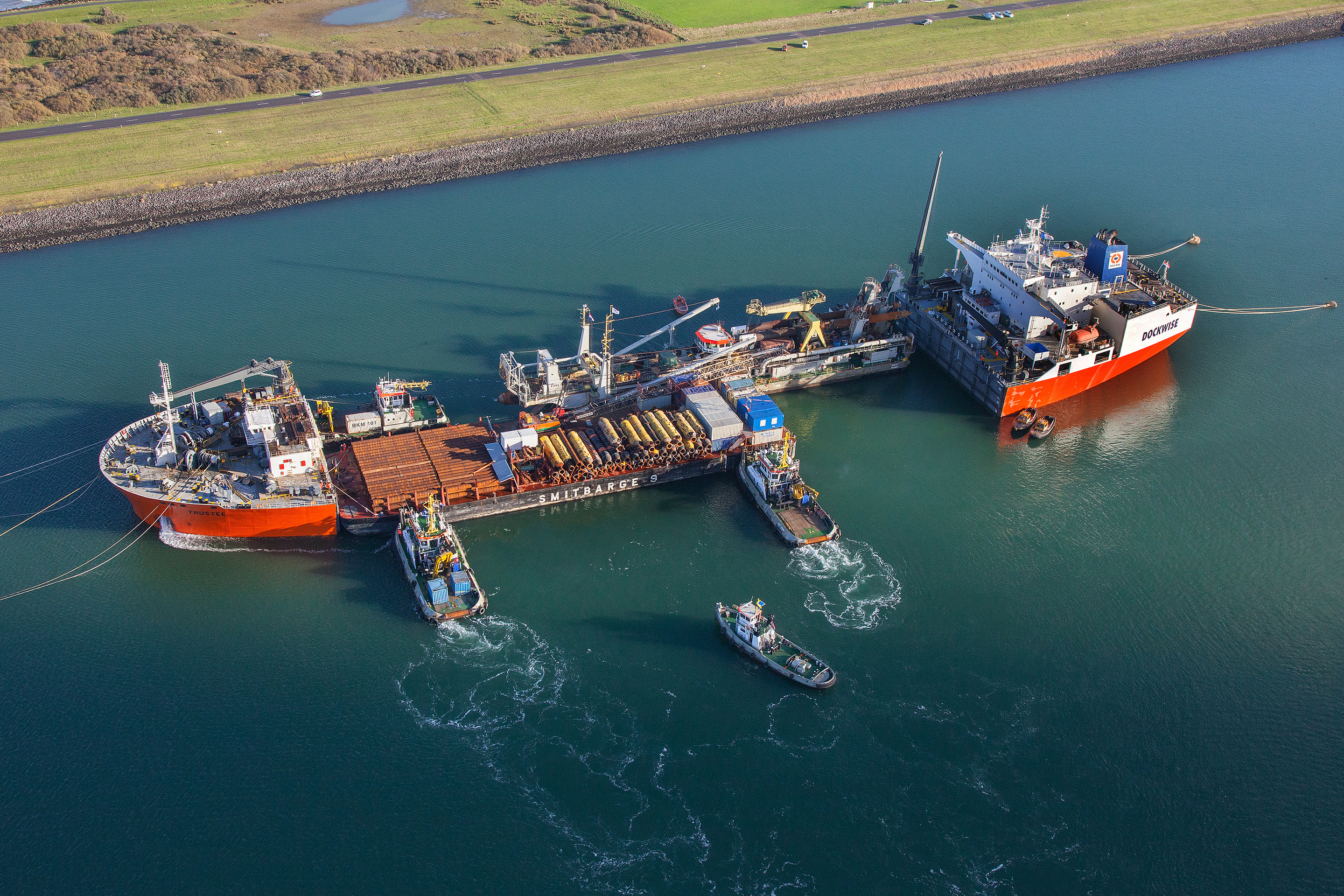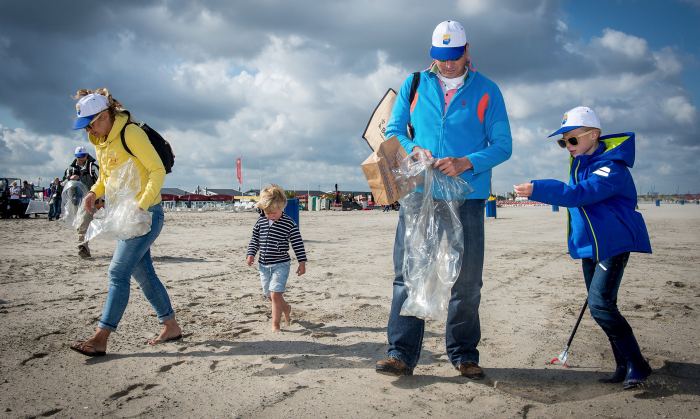Dredging a 35-kilometers-long and 24-meters-deep shipping route in a year
The news that the Suez Canal was to be expanded was a global headline last year. Boskalis is a member of the consortium that will be executing most of this prestigious assignment, worth USD 1.5 billion, in an extremely short period of time. Never before has so much equipment been deployed on a dredging project as during the expansion of the Suez Canal. Never have the time pressures on a project been so enormous, and never has there been a project with such high production volumes. Currently, more than 1,000,000 m3 of material will be dredged every day. It’s a race against the clock but the work is still on schedule. Bas van Bemmelen, director of the Dredging Division’s Area Middle, reports on the current situation at the end of March.
What role will Boskalis play in all the work on the Suez Canal?
Bas: “The ‘new’ Suez Canal will, in part, be built parallel to the current canal. In other sections, the work will include widening and deepening the existing canal. A section of approximately 75 kilometers will be widened and deepened to -24 meters. A large part of that work — the construction of a section parallel to the present canal over a distance of approximately 35 kilometers — will be executed by a consortium comprising Boskalis, NMDC, Van Oord and Jan de Nul. This section goes straight through the Sinai Desert, an area that can be as high as +20 meters above sea level in some places. Supervised by the Egyptian army, local companies have been working flat out since August 2014 to remove that top layer down to a level of one meter above sea level. Excavators and trucks have been depositing all the material in parallel to the section that we will be building. It is not the aim of this project to make two-way traffic possible on the entire canal. There will be a long section with two-way traffic but passing places will be built on other sections. Shipping will continue to sail through the canal in convoys but the convoys will be much longer.”
Our consortium will be dredging 180 million cubic meters in less than one year



What volumes will be dredged and what equipment will be deployed?
Bas: “Our consortium will be dredging 180 million cubic meters in less than one year. By comparison, the Maasvlakte 2 project involved 240 million cubic meters in three years. The idea is that ships will be sailing through the new canal as from September of this year. The enormous time pressure means that all the consortium partners are having to deploy as much of their available equipment as possible, resulting in a fleet of approximately 20 cutter suction dredgers of different sizes and with different capacities, and a number of trailing suction hopper dredgers. The material to be dredged consists largely of cemented sand and gravel, and so it is not too hard. It is possible that we will use cutter suction dredgers to cut up the bottom layers and then send in the hoppers to dredge the material. All the consortium partners are working hard on mobilizing equipment. That’s a gigantic logistical operation because, in addition to the vessels, we need large stocks of pipelines, anchors, pick points and earthmoving equipment. And accommodation for the workforce is another issue requiring attention: when the project is in full swing, there will be approximately 1,800 people at work, either onshore or on one of the barges or vessels. We have already arranged for a number of accommodation vessels.”
The media were surprised about the short period of time between the announcement of the project and the signing of the contract. When did the contract negotiations start?
Bas: “Everything went exceptionally quickly. There had already been talk in the past about this project going to market but nothing concrete had actually emerged. So when the Egyptian president Al-Sisi announced in August last year that an extra Suez Canal had to be built, it was initially unclear what the possible timetable would be. Though we kept a close eye on every development, it was early September before we received an invitation to start negotiations. The contracts were signed in mid-October and so it was indeed a surprisingly fast process, especially given the magnitude of the project.”
When the project is in full swing, there will be approximately 1,800 people at work
What will be the approach to the work? Will the activities be affected by the continuation of shipping traffic on the canal?
Bas: “Our work is located entirely parallel to the existing canal and so there will be no interference when we ‘break in’. Our section of the ‘new’ canal will only be opened for operations when it has been completely finished. In view of the layout of that section, we could work on six fronts at the same time, in part depending on when the various vessels arrive. However, given the logistics and the location of the accommodation, we are trying to concentrate the work as much as possible on a limited number of fronts. Our job is to build a canal that will be 24 meters deep and 400 meters wide. Depending on the type, a cutter suction dredger can cover a width of 100 to 140 meters. By deploying the cutter suction dredgers a number of days after one another and getting them to work diagonally behind one another, we can work with three cutter suction dredgers at the same time in a single location. That means we can remove layers of four to six meters at a time. The bottom layer can, in principle, be managed using the hoppers. In that way, we hope to make our logistics as efficient as humanly possible. The dredgers will pump the material short distances through floating pipelines straight to shore. This process will also require high standards of professional expertise and organizational talent because this will be a landfill being fed simultaneously by eight or nine cutter suction dredgers. That fact alone will result in a gigantic operation.”
